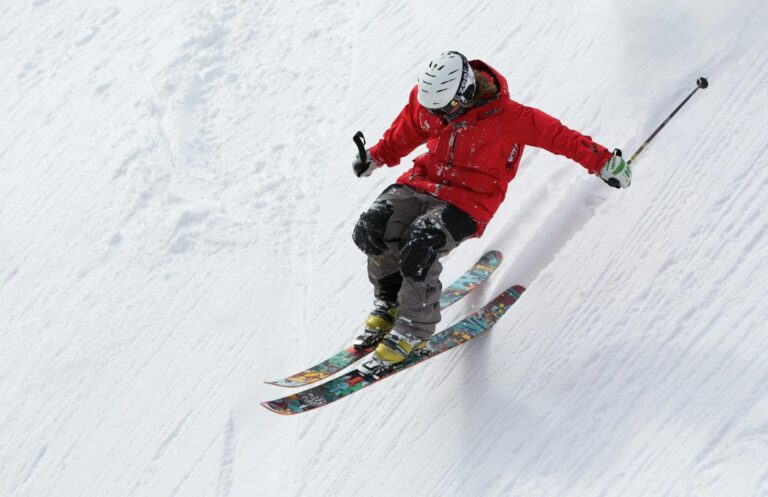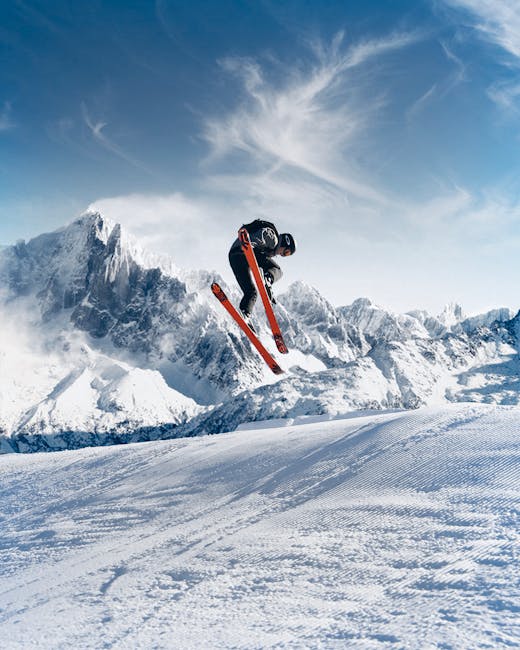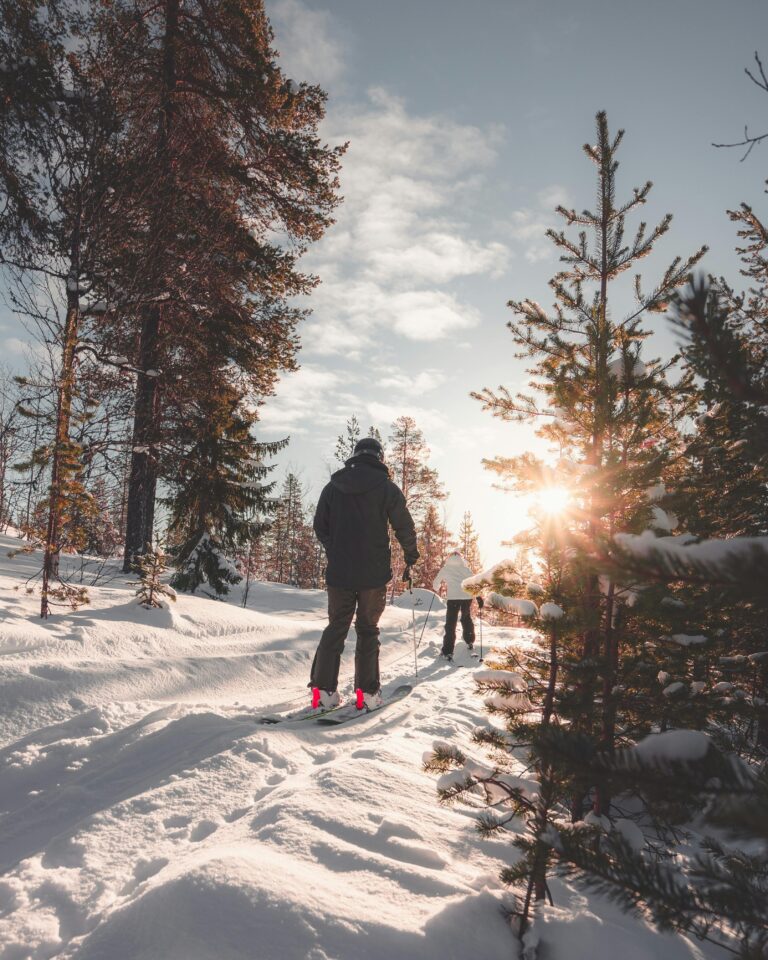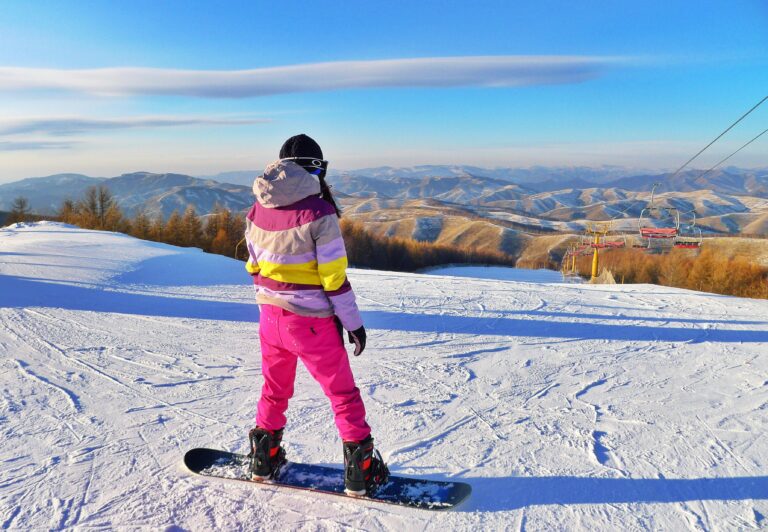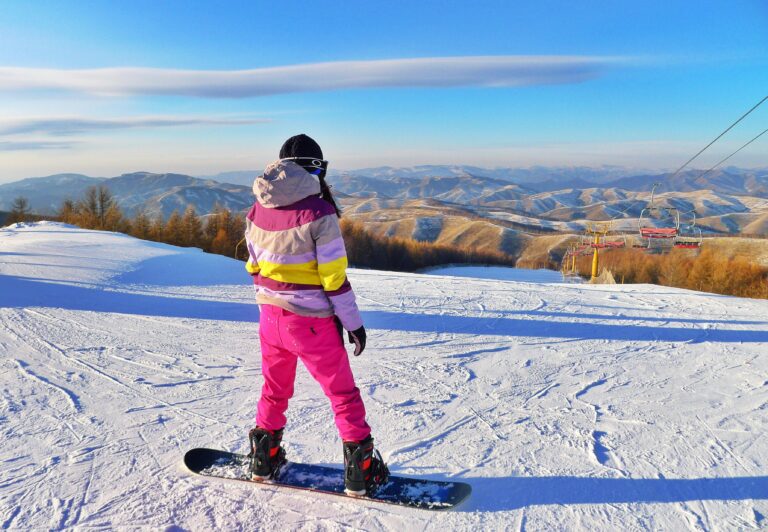Carving vs. Skidding: Which Technique Is Right for You?
When you strap on those skis or lace up your snowboard, you’re not just getting ready for a day on the slopes; you’re stepping into a world where technique can significantly impact your experience. The two primary techniques you’ll hear bandied about are carving and skidding. But what do they mean, and why are they crucial to your performance? Let’s dive into the depths of these techniques and get you on the right track.
Carving vs. Skidding: Which Technique Is Right for You?
Carving is optimal for speed and precision, while skidding offers control and adaptability for a variety of skill levels. Beginners often prefer skidding for security, while advanced riders utilize carving for agile and fast turns. Mastering both methods will enhance your overall skiing or snowboarding experience.
What Are Carving and Skidding Techniques in Skiing and Snowboarding?
At their core, carving and skidding represent two different approaches to turning and controlling your speed on snow. Understanding these methods is essential for everyone from novices to seasoned riders.
Definition of Carving
Carving is all about precision. When you carve, you tilt your skis or snowboard onto their edges. This allows you to navigate turns in a way that maintains your momentum and flow, creating clean arcs in the snow. Essentially, you’re using the design of your equipment to create friction only where you need it, leading to swift, efficient turns. In competitive skiing and snowboarding, carving is prized for its speed and the ability to maintain control even on steep terrains.
Definition of Skidding
On the flip side, skidding is a more versatile yet less efficient technique. It involves sliding your skis or snowboard sideways across the snow instead of using the edges. Think of it as a broader arc, which can help you maintain balance while you brake or maneuver in tricky situations. Skidding engages more of the base of your board or skis, making it an essential skill for controlling speed, especially in steeper or more variable conditions.
Importance for Skill Levels
- Beginners: For newcomers, skidding offers a sense of security. It allows them to control speed and navigate slopes without a steep learning curve.
- Intermediate: As riders become more confident, they can blend both techniques; skidding provides a solid foundation for mastering carving.
- Advanced: Carving is where advanced techniques shine. Experts utilize this skill for speed and precision in competitive settings.
In short, whether you’re racing down a groomed slope or weaving through a forested path, mastering both carving and skidding is the key to becoming a proficient skier or snowboarder.
Now that we’ve established a foundational understanding of both techniques, let’s navigate through the differences that set them apart. Continue reading to discover how each mechanism works and in what contexts they’re best applied!
What Are the Key Differences Between Carving and Skidding?
When it comes to skiing and snowboarding, understanding the differences between carving and skidding can greatly affect your performance on the slopes. Both techniques are widely used, but they serve distinct purposes and cater to different skill levels, styles, and conditions. As you embark on your journey through the snowy hills, knowing when and how to apply each technique can enhance your experience and keep you safe.
Technical Differences
- Edges vs. Base Usage
- Carving: This technique involves utilizing the curved edges of your skis or snowboard. Picture this: as you initiate a turn, you lean into it, allowing the sharp edges of your equipment to grip the snow. This results in a clean, smooth arc that carves through the snow with precision. Carving demands a degree of skill and balance, as you need to maintain your center of gravity over the edges.
- Skidding: In contrast, skidding uses a flat base for your skis or snowboard, leading to wider turns and a more slippery approach. Imagine gliding down a slope and lightly applying pressure to the tail of your board or skis to scrub off speed. This technique allows more lateral movement, offering a more casual ride that’s particularly beneficial when you need quick stops or adjustments in tight situations.
- Speed and Control
- Carving: If you’re looking for speed and efficiency, carving is your go-to. With your edges dug in and weight properly distributed, you can maintain higher velocities while turning. The smooth transitions characteristic of this technique minimize drag and maximize the exhilaration of speed. However, it requires control and confidence—you want to avoid any sudden shifts in weight that could lead to a tumble.
- Skidding: On the flip side, skidding emphasizes control over speed. This technique allows you to navigate curves or obstacles while applying brakes naturally. It’s excellent for beginners who are still learning the terrain and refining their balance. Plus, skidding can serve as an excellent way for advanced riders to maintain stability when the slopes get steep or unpredictable.
Terrain Adaptability
- Carving excels on groomed runs or hard-packed snow, as the maintained surface supports the necessary edge grip; however, it can become more challenging on icy terrain. The lack of friction means skiers and snowboarders must be extra cautious, as errors are magnified at high speeds.
- Skidding shines in softer, powder conditions where the snow provides a natural cushion, allowing for more gradual transitions. This technique is often favored by beginners or riders dealing with mashed potato snow, who may feel less confident navigating through deep powder while maintaining balance.
Summary of Key Differences
| Aspect | Carving | Skidding |
|---|---|---|
| Technique | Uses curved edges for smooth turns | Utilizes a flat base for wider arcs |
| Speed | High speed, efficiency | Slower, more controlled |
| Control | Requires balance and skill | Suitable for beginners and safety |
| Terrain | Best for groomed runs | Ideal for soft or steep conditions |
Understanding these differences is crucial as you navigate your skiing or snowboarding career. The combination of skilled carving and useful skidding allows riders to adapt to any slope they encounter. Whether you’re carving through a freshly groomed trail or skidding safely down a steep, powdery hill, mastering both techniques is key to becoming a versatile and confident rider.
Further Learning
For those wanting to dive deeper into the mechanics of skiing, you might be interested in resources such as the National Ski Areas Association’s guide on skiing safety and technique, or explore outdoor gear options that focus on optimizing your performance on the slopes.
In the end, finding your balance between carving and skidding not only enhances your skills; it opens up a broader spectrum of enjoyment in the great outdoors. The slopes are waiting—now go out and carve or skid your way to an unforgettable experience!
When Should You Use Carving vs. Skidding?
Navigating the slopes of winter wonderlands requires adaptability. Whether you’re gliding gracefully down groomed trails or tackling off-piste powder, knowing when to carve and when to skid can make all the difference between a thrilling ride and a precarious tumble. Let’s unpack the scenarios where each technique shines, ensuring you can maximize your fun and safety on the mountain.
Specific Conditions for Carving
Carving is often associated with precision and speed. It’s the glamorous technique that allows advanced skiers and snowboarders to maneuver through turns seamlessly, leaving behind a signature arc in the snow. Here’s when you should lean into carving:
- Groomed Runs: Ideal conditions for carving exist on well-maintained, groomed slopes. The smooth surface allows you to engage the edges of your skis or snowboard effectively, providing maximum grip and control.
- High Speed: If you’re seeking that adrenaline rush, carving at high speeds is exhilarating. The technique minimizes resistance and helps maintain your momentum through turns.
- Firm or Icy Terrain: Carving shines on firm or icy surfaces, where the edges of your equipment can dig in positively. This is particularly useful for more experienced riders who can manage the balance and pressure needed for effective carving.
Remember, carving requires an ability to shift your weight effectively and a strong sense of balance. As you carve, your body should lean into the turn, allowing the edges to do their job.
Specific Conditions for Skidding
Skidding isn’t just a fallback for beginners; it’s a versatile maneuver that can be quite beneficial in many situations. Here’s when skidding might be your best friend:
- Steep Slopes: On steep terrain, skidding provides much-needed control. As you descend, skidding allows you to slow down without leaving sharp edges that could lead to speed wobbles or loss of control.
- Heavy Powder: In soft, untracked snow, skidding can help maintain stability as it’s more forgiving on variable surfaces. With powder, it’s tricky to carve since the surface can easily cause your skis or board to catch.
- Beginners: For those new to skiing or snowboarding, skidding builds confidence. It trains your body to maneuver while ensuring that if you do fall, it’s less likely to be a high-speed tumble. Skidding allows for more forgiving and gradual turns, letting novices hone their instincts.
Skidding enables you to maintain a degree of control as you feel more in tune with your surroundings and the snow’s texture. Practice it well, and it paves the way for a smoother transition into carving.
Evaluating Your Rider Goals
Your choice of technique could also be influenced by what you aim to accomplish on the slopes:
- Skill Development: For beginners, focusing on skidding can be invaluable for developing balance and control. As confidence grows, transitioning to carving can be a smooth next step.
- Increased Thrill: It’s no secret that carving often leads to a more exhilarating experience. If your goal is to push your limits and improve your speed, building up your carving skills should be a priority.
- Versatility: Many seasoned riders master both techniques, allowing them to tailor their approach based on the conditions and their mood. Adopting both styles makes you adaptable, enhancing your overall experience on the slopes.
The Bottom Line
In conclusion, understanding when to carve and when to skid empowers you to make informed decisions as you navigate varying slopes and conditions. If you’re on groomed terrain at high speeds, carve away! But if you’re on a steep incline or in soft powder, it’s time to skid.
By mastering both techniques, you’ll not only enhance your riding but also build a repertoire of skills that reflect your adaptability and creativity on the slopes. Ready to hit the mountain? Arm yourself with knowledge, and you’ll conquer every run with confidence and flair!
Feel free to explore more about skiing and snowboarding safety and tips at Solo Sports World:
For even deeper insights into skiing dynamics: National Ski Areas Association on Safety and U.S. Ski & Snowboard Guidelines are essential resources.
What Are the Advantages and Disadvantages of Carving and Skidding?
When it comes to skiing and snowboarding, mastering your technique can make all the difference in your performance and enjoyment on the slopes. Among the various techniques to choose from, carving and skidding are two foundational approaches, each with its unique advantages and disadvantages. Understanding these factors can help you determine which technique best suits your style, skill level, and the conditions you’ll be riding in. Let’s delve deeper into what each technique offers and where they may fall short.
Pros of Carving
- Speed and Efficiency: Carving allows skiers and snowboarders to maintain higher speeds while turning. When done correctly, your edges grip the snow, creating a smooth, clean arc that minimizes resistance and maximizes momentum. This efficiency makes carving the go-to technique for those who thrive on groomed runs and want to feel the rush of racing.
- Precision Turns: Carving offers a level of control that can enhance your performance, especially on well-groomed slopes. The ability to execute tight turns with precision enables you to navigate through courses and around other riders with ease.
- Aesthetic Appeal: There’s an undeniable grace to carving. Many find joy in executing fluid, sweeping turns that look and feel impressive. It’s not just a technique; it’s an art form that resonates with experienced riders.
- Better Response in Advanced Conditions: As you progress and encounter various gradients and snow conditions, carving will provide a level of response and control that’s hard to match, cutting through icy patches and navigating challenging terrain.
Cons of Carving
- Skill Requirement: Carving demands a solid foundation of balance, technique, and experience. It requires a better understanding of weight distribution and edging, which can be daunting for beginners. The learning curve can lead to falls and frustration, which may discourage new riders.
- Risk of Injury: Improper execution can increase the risk of falls or injuries, particularly knee or ankle injuries due to improper body positioning or loss of control while carving at high speeds.
- Terrain Limitations: Carving is less effective on uneven terrain, heavy powder snow, or in steep areas where control is paramount. In these cases, relying solely on carving may lead to difficulties.
Pros of Skidding
- Control and Safety: Skidding is a highly versatile technique that provides excellent control, making it particularly useful for beginners and those navigating steep or challenging areas. It allows riders to adjust their speed and direction easily, which fosters a sense of confidence and control.
- Enhances Skill Development: For beginners, skidding can help build the necessary skills to progress to carving. It teaches riders how to manage their weight and balance while responding to changing terrain, laying the groundwork for more advanced techniques.
- Versatility in Conditions: Skidding is adaptable to various snow conditions, including heavy powder and slushy terrain. It allows for broader turns and a more relaxed ride, which can feel more manageable for less experienced riders.
- Freestyle Opportunities: The skidding technique gives riders the ability to maneuver in various ways, adding versatility for those interested in freestyle riding. You can initiate tricks and navigate around obstacles with ease.
Cons of Skidding
- Less Speed: While skidding offers control, it doesn’t allow for the same speed as carving. Riders may feel limited in their pace, especially when trying to keep up with faster skiers.
- Poor Form Development: Relying too heavily on skidding can lead to the development of poor techniques. It can create habits that later hinder your ability to carve effectively, resulting in a less efficient style when it’s time to advance your skills.
- Wider Turn Arcs: Skidding generally produces broader turn arcs, which might not be suited for courses that require sharp direction changes or precision maneuvering.
Summary Table
| Technique | Advantages | Disadvantages |
|---|---|---|
| Carving | – Speed and efficiency – Precision turning – Aesthetic appeal – Advanced condition responsiveness |
– Requires skill – Risk of injury – Limited in uneven terrain |
| Skidding | – Control and safety – Skill development – Versatile across conditions – Freestyle-friendly |
– Less speed – Poor form development – Wider turn arcs |
Conclusion
Choosing between carving and skidding ultimately depends on your skill level, comfort, and the specific conditions on the slopes. For beginners, skidding offers a sense of safety and control that builds confidence. Advanced riders may find themselves leaning towards carving to unleash speed and precision. Nonetheless, mastering both techniques is vital for well-rounded riding. Embrace the strengths and understand the limitations of each to enhance your overall skiing or snowboarding experience.
Whether you’re gliding with grace into a carve or maintaining control in a skid, being aware of these techniques’ advantages and disadvantages is the key to elevating your time on the mountain. So, get out there, explore, and strike a balance that works for you!
How Do Snow Conditions Affect Carving vs. Skidding Techniques?
When it comes to skiing and snowboarding, the snow conditions can dramatically change how different techniques—namely carving and skidding—perform on the slopes. Understanding this relationship not only enhances your riding experience but also promotes better safety and technique proficiency. In this section, we’ll delve into the various snow conditions and how they impact the effectiveness of carving and skidding methods, so you can adapt your style and maximize your time on the mountain.
1. Hard Pack and Ice
Carving: The Go-To Technique
On hard-packed and icy surfaces, carving reigns supreme. When the snow is compacted, the edges of your skis or snowboard can dig in and create cleaner, tighter turns. This is because the resistance is minimal on hard surfaces, allowing you to generate speed and maintain control.
Advantages:
- Precision: Carving on hard surfaces provides more control and accuracy in your turns.
- Speed: It allows for faster runs, as you can maintain momentum without losing grip.
Challenges:
The downside? These conditions can be unforgiving. If you don’t maintain proper technique or alignment, a slip can lead to significant falls. Therefore, it’s essential to stay balanced and engaged with your edges while carving.
2. Powder and Slush
Skidding: The Perfect Answer
When you encounter fresh powder or slushy snow, skidding often takes precedence. The soft texture beneath you reduces friction, and the wider arcs of skidding become advantageous. You can easily navigate through deep snow without the risk of catching an edge and tumbling headfirst.
Advantages:
- Control: With skidding, you can adjust your speed and direction more safely in unstable powder.
- Versatility: This technique is beginner-friendly, making it ideal for those still mastering their balance.
Challenges:
While skidding may be safer, it also comes with the disadvantage of less speed and efficiency compared to carving. Learning to maintain momentum while skidding in deep snow can be tricky.
3. Icy Terrain vs. Soft Snow
The difference in snow conditions can also dictate how each technique behaves. On icy terrain, the need for precise edge control through carving is elevated, as it allows you to cut through slick layers using your edges effectively. Conversely, in soft snow, skidding helps riders maintain stability and navigate bends without the fear of catching an edge, which can lead to falls.
4. Transitioning Between Techniques
As conditions change throughout the day—especially in spring, when the snow shifts from hardpack to slush—riders must be adept at transitioning between carving and skidding. Here’s how:
- Stay Observant: Pay attention to the terrain. If you’re carving and find patches of slush, be ready to switch to skidding.
- Practice Combining: Consider incorporating both techniques into your runs. Experiment with carving on soft patches and skidding when conditions become difficult, as this adaptability leads to better overall performance.
5. Final Thoughts
Snow conditions play a pivotal role in determining your approach on the slopes. While carving is optimal for hard-packed and icy runs, skidding becomes your best friend in deeper powder or slushy snow. Adapting to the conditions—instead of sticking to a singular technique—enhances both your enjoyment and safety. Embrace the variability, and let it inform your choices on the mountain.
Remember to always assess the snow conditions when preparing to hit the slopes, as they can make or break your experience. Whether you lean toward carving or skidding, staying adaptable will ensure that you ride with confidence, safety, and pleasure.
How to Transition from Skidding to Carving?
Transitioning from skidding to carving is a pivotal moment in a skier’s or snowboarder’s journey. Mastering these techniques can significantly enhance your experience on the slopes, enabling you to enjoy greater speed, control, and precision. However, the shift often requires patience, practice, and the right approach. Let’s explore practical tips and drills to help you make that leap successfully.
1. Understanding the Basics
Before diving into drills, it’s crucial to recognize the fundamental difference between skidding and carving:
- Skidding: This technique involves using the flat base of your skis or snowboard to control your speed and direction. It often results in a broader arc and is great for beginners who are still gaining their balance and confidence on the slopes.
- Carving: This technique leverages the edges of your skis or snowboard to create precise, clean turns with minimal side slipping, allowing for faster and smoother navigation.
By fully grasping these basics, you’ll better appreciate the drills and techniques for transitioning.
2. Fundamental Drills to Build Edge Control and Balance
Here are some effective drills to enhance your skills in both skidding and carving:
- Ditch the Skidding: On gentle slopes, focus on straight skidding with both skis or snowboard. Gradually introduce edging: press your outside edges into the snow and try to make your skids more controlled. This helps build muscle memory for future carving.
- Edge Movements: While traversing across a gentle slope, practice shifting your weight from edge to edge. This drill enhances your awareness of how your body movements influence the ski or snowboard’s trajectory.
- C-Cuts: Create a “C” shape in the snow with your skis or snowboard. Start with skidding, and as you transition to a carve, increase your angle. This exercise emphasizes the need for sharper turns and helps you feel the carve as your edges engage.
- The J-Turn: Start at a controlled speed and perform a turn on one ski (or the edge of your snowboard) as you gradually move into a carving motion. It builds confidence in weighting and pressure sensitivity.
3. Tips for Proper Body Positioning
Body positioning is key in carving, and it often differs from skidding. Here are some tips to ensure you’re in the correct posture:
- Lower Your Center of Gravity: Bend your knees and keep your hips low when carving. This allows for better balance and control as you engage the edges.
- Weight Distribution: Shift your weight dynamically while turning. For a right turn, lean slightly onto your left ski or edge, and vice versa for left turns.
- Hands Ahead: Keep your hands in front of your body rather than letting them trail behind. This promotes a more athletic stance and adds balance.
4. Progressive Learning Steps
To ensure a smooth transition, it’s important to incorporate these techniques gradually rather than rushing through them. Follow this progression:
- Practice Slower Speeds: Start with lower speeds while practicing your turns. As you become more confident with your edge control, gradually increase speed until you feel comfortable moving into carving.
- Combine Techniques: Don’t hesitate to blend skidding and carving! Incorporate short carving turns within your skid-based runs to develop your comfort with the latter without letting go of control.
- Explore Varied Terrain: Try transitioning on different slopes and snow conditions. Icy patches may require more carving, while powder snow might lead you back to skidding. Being versatile in your technique will improve your overall skillset.
5. Additional Resources for Growth
If you’re looking to deepen your understanding and technique more systematically, consider checking out AASI for instructional resources or tutorials. Engaging with knowledgeable instructors can provide tailored advice suited to your strengths and weaknesses.
Conclusion: Embrace the Journey
Transitioning from skidding to carving is more than just a technical shift; it’s a journey packed with learning, adjustments, and delightful moments on the slopes. Remember that every skier or snowboarder has faced this challenge. With consistent practice, wrong turns, and the joy of small victories, you’ll build the confidence needed to carve your way down any mountain. Happy riding!
What Mistakes Should Skiers and Snowboarders Avoid with Each Technique?
When it comes to skiing and snowboarding, mastering either carving or skidding can open up a world of possibilities on the slopes. However, many riders, regardless of their skill levels, fall into common pitfalls that can hinder their progression and, at worst, lead to injuries. In this section, we’ll explore the typical mistakes associated with carving and skidding techniques, as well as offer tips on how to avoid them.
Common Mistakes in Carving
- Poor Body Alignment
Carving requires precise body positioning. One of the most frequent mistakes is leaning too far back on your skis or snowboard. This often results in losing control and reducing the effectiveness of the turn. Aim to keep a balanced center of gravity, with your weight distributed evenly across your feet. - Over-rotation of Shoulders
Many skiers and snowboarders end up turning their shoulders too much while initiating a carve. This can lead to skidding rather than carving, as the movement becomes too exaggerated. Instead, focus on keeping your shoulders aligned with your hips to maintain a smooth, controlled turn. - Not Using the Edges Properly
Inexperienced riders often fail to effectively engage their edges. Carving relies on the edges of your skis or snowboard to grip the snow. If you’re relying on the flat base of your board or skis, you’ll drift instead of carve. Make sure to lean into your turns and engage the edges appropriately. - Insufficient Speed
It’s common for beginners to hesitate and slow down before making a turn, thinking it will give them more control. However, carving works best at a certain speed—too slow and you won’t have enough momentum to complete the turn effectively. Find a balance between speed and control that allows you to carve confidently. - Skipping Drills
Many aspiring skiers and snowboarders want to jump straight into freestyle riding or moguls without mastering the essential carving drills. Regular practice of basic carving techniques and drills (like practicing wide, sweeping turns) can solidify your skills before advancing to more complex riding styles.
Common Mistakes in Skidding
- Poor Weight Distribution
A common mistake while skidding is uneven weight distribution. When you’re skidding down a slope, many riders shift their weight backward, feeling insecure. Instead, try to keep your weight centered over your board or skis, allowing for better control and a more balanced technique. - Overusing Skidding as a Stop Technique
While skidding can be a useful stopping method for beginners, relying on it exclusively can limit your growth. As you progress, it’s essential to adopt carving techniques as they provide more efficiency and speed—don’t let skidding be a crutch that holds you back! - Incorrect Pressure Application
Applying too much pressure while skidding can result in loss of control. Conversely, too little pressure may lead to sluggish responses. Find the right balance by experimenting with your body weight and pressure applied to your edges to achieve the desired maneuverability. - Ignoring Terrain Changes
Many snowboarders and skiers neglect to adjust their skidding technique according to terrain changes. Whether you’re moving from icy patches to powdery terrain, it’s essential to adapt your skidding technique accordingly. Fail to do this, and you might find yourself unexpectedly slowing down or losing control. - Having a Negative Mindset
Beginner riders often express frustration with their level of proficiency. This negative mindset can affect performance, making skidding feel more impossible than it is. Instead, view skidding as a valuable skill that enhances your ability to navigate the slopes with confidence. Embrace the learning experience!
Tips for Improvement
- Seek Instruction: Consider signing up for lessons with a certified instructor. Their feedback can pinpoint mistakes you might be unaware of.
- Record Yourself: Video yourself skiing or snowboarding. Watching your technique can provide invaluable insights for improvement.
- Ask for Feedback: Have a buddy watch you carve or skid and provide constructive feedback on your technique.
- Set Mastery Goals: Break down your skill progression into manageable goals. Focus on mastering one technique at a time before moving on to the next.
Remember, both carving and skidding have their places on the slopes, and honing your skills in each technique not only improves your riding but also your overall enjoyment of the sport. By being mindful of the mistakes outlined here, you can become a more skilled and capable skier or snowboarder.
For more detailed tips about skiing techniques, you can check out Solo Sports World: Skiing Techniques. Additionally, ensure that you are aware of safety precautions while carving or skidding by visiting Solo Sports World: Ski Safety. Happy riding!
What Are the Best Resources for Learning Carving and Skidding Techniques?
As a skier or snowboarder, mastering the techniques of carving and skidding can elevate your performance and improve your enjoyment on the slopes. Whether you’re just starting or looking to refine your skills, there’s a wealth of information out there to guide you. Here, we’ve compiled some of the best resources available for learning and improving these essential techniques.
Recommended Online Tutorials
- YouTube Video Tutorials
- Ski School: The Ski School channel on YouTube offers a collection of instructional videos that break down both skidding and carving techniques. Their “Skiing Techniques for Beginners” video is a great starting point, illustrating visual differences and proper body mechanics.
- Snowboard Pro Camp: This channel provides detailed visual guidance on when to use skidding versus carving, including live demonstrations on the slopes. It’s ideal for visual learners who appreciate seeing techniques in action.
- Online Learning Platforms
- MasterClass: If you’re looking for a more structured approach with professional guidance, consider enrolling in courses offered by renowned instructors on platforms like MasterClass. Topics often include both carving and ski fundamentals, focusing on improving technique efficiency.
- Skiing and Snowboarding Forums
- Community forums like Reddit’s r/skiing or r/snowboarding are fantastic places to engage with fellow skiers and snowboarders. You can ask questions, share experiences, and even find local meet-up groups. Often, members post links to useful resources or provide firsthand insights on their learning journeys.
Books and Guides
- “The Skiing Book: A New Guide to Safety and Technique”
This comprehensive guide offers practical tips for all skill levels, covering everything from the basics of skidding to advanced carving techniques. It’s an excellent reference for both on-mountain and off-mountain studying. - “Snowboarding: Skills, Techniques, and Tips”
This book focuses on snowboard techniques, including a dedicated section on the importance of mastering skidding before transitioning to carving for better control. A must-read for beginners aiming to establish a solid foundation. - “The Freestyle Snowboarding Manual”
While primarily aimed at freestyle riders, this book covers essential techniques like skidding and carving, emphasizing the importance of these skills as foundational components in progressing to jumps and tricks.
Professional Instruction
- Local Ski Schools
One of the best ways to learn is through professional instructors. Many ski resorts offer lessons tailored to various skill levels. The American Association of Snowboard Instructors (AASI) website can help you locate certified instructors near you who specialize in teaching carving and skidding techniques. - Group Workshops
Some resorts host special workshops focusing on improving skiing and snowboarding techniques, which can be both informative and social. Look out for these events during the ski season.
Online Resources and Articles
- PSIA/AASI: The Professional Ski Instructors of America and American Association of Snowboard Instructors offer published articles on technique improvement. Their resources dive deep into the nuances of both carving and skidding and provide useful drills to practice.
- Skiing and Snowboarding Blogs: Websites like Solo Sports World frequently contain articles detailing safety, techniques, and gear recommendations that can serve as additional reading material. You might find specific articles related to the dangers and challenges of skiing or snowboarding that indirectly enrich your understanding of the technical side of the sport.
Community Engagement
- Discussion Forums: Consider joining forums like Quora where passionate skiers and snowboarders share tips and personal experiences about transitioning from skidding to carving. You can exchange knowledge, gain new perspectives, and find motivation by engaging with others on similar journeys.
Conclusion
Whether you prefer self-paced learning through videos, engaging with a community of enthusiasts, or receiving hands-on instruction from professionals, numerous resources are available to help you hone your skidding and carving techniques. Don’t forget to practice regularly, and remember—every expert skier or snowboarder started right where you are now. Embrace the process, and have fun on the slopes!
How Can Your Riding Style Influence the Choice Between Carving and Skidding?
When it comes to skiing and snowboarding, your riding style plays a pivotal role in determining whether you should lean more towards carving or skidding techniques. Various factors—such as skill level, confidence, objectives, and even body type—shape how you navigate the slopes. Understanding these influences can significantly enhance your on-mountain experience, allowing you to make informed decisions that align with both your capabilities and conditions.
Riding Style and Skill Level
Beginners
For those just starting, skidding often feels like the most comfortable choice. It provides more control and allows you to focus on mastering balance and turning without the intensity of carving. Skidding helps beginners to slow down and adjust to different conditions without the fear of picking up too much speed.
Intermediate Riders
Once you’ve gotten the hang of skidding, you may feel ready to explore carving. This technique provides a sharper, more dynamic maneuver that can elevate your skiing or snowboarding experience. Intermediate riders should practice both techniques to maintain versatility on the slopes. Skidding can still be beneficial when navigating difficult terrain, while carving can improve speed and efficiency.
Advanced Riders
Experienced skiers and snowboarders often favor carving for its ability to generate speed and aesthetic fluidity. At this stage, skidding becomes more of a tool for specific situations, such as managing steep slopes or navigating variable snow conditions. Advanced riders who master both techniques can smoothly transition between them, adapting to the demands of each run.
Confidence Levels
Your level of confidence plays a big role in technique choice. Confidence drives the willingness to experiment. A confident rider might feel emboldened to carve, enjoying the thrill of high-speed turns on groomed runs. Conversely, a less confident rider may stick to skidding, where they feel grounded.
- Known risks: If you’re venturing onto icy areas or steep slopes, skidding may offer a safety net, allowing you to control speed and navigate without fear.
- Building mastery: As your expertise grows, incorporating carving into your routine can boost your confidence further, empowering you to tackle more challenging runs.
Personal Goals
Your objectives on the mountain will inevitably influence your choice between carving and skidding. Are you aiming for thrill and speed, or do you want to build foundational skills?
- Speed Seekers: If your goal is to achieve velocity and grace on your runs, carving is likely your go-to technique. It allows you to navigate courses with precision.
- Skill Development: On the other hand, if you are focused on improving your overall technique, skidding is paramount. It helps develop your edge control, balance, and confidence, all crucial for advancing to carving.
Body Type and Riding Style
Your physical characteristics can also shape your skiing and snowboarding style. Taller individuals might find that carving comes naturally due to their leverage and body mechanics. Conversely, lighter or smaller riders may feel more secure skidding as it offers a wider turning radius and slower speeds, making it easier to control and maneuver.
Key Takeaways
- Adapt to Skill Level: Beginners should focus on skidding, while intermediates and advanced riders should practice transitioning to carving.
- Build Confidence: Start with skidding to gain comfort, then gradually incorporate carving as you become more confident.
- Align with Goals: Choose your technique based on personal objectives, whether for speed or skill development.
- Consider Body Mechanics: Your height and weight influence how you can effectively use each technique.
By understanding how your riding style, confidence level, goals, and body type affect your choices, you can enhance your skiing or snowboarding experience. Mastering both carving and skidding will offer you complete versatility on the slopes, allowing you to adapt your technique to suit changing conditions and personal aspirations.
For a deeper dive into skiing safety, techniques, and riding tips, explore our articles on skiing dangers and how hard skiing can be. These resources can help you maximize your performance while staying safe on the mountain.

